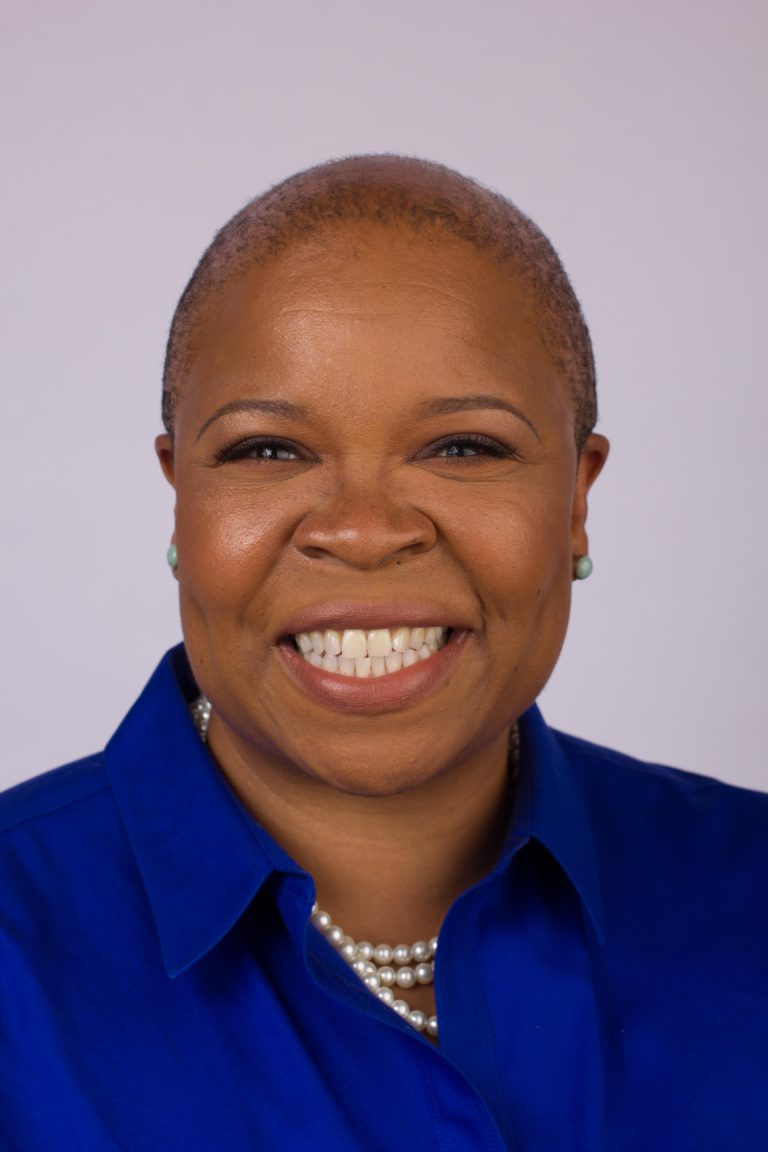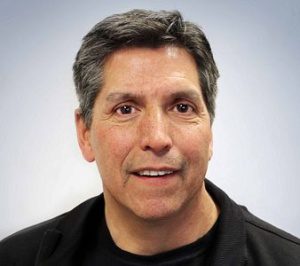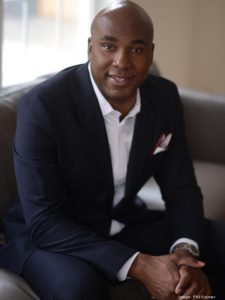Relying on the largesse of big funders is a complicated and often frustrating endeavor.
By Madhusmita Bora

“This equity, anti-racist work is for the long haul…I hope somebody keeps the ball rolling and the awareness turns into new policies and fundraising strategies.” Crystal Cubbage, founding executive director of the Philadelphia Learning Collaborative.
In the summer of 2020, Crystal Cubbage wrote more grants than she ever did in any other given cycle. That year, the pandemic and George Floyd’s death consumed the public’s consciousness, unleashing a racial reckoning like no other. Like other private sectors, the philanthropy world pledged billions of dollars toward racial equity.
“I was skeptical,” said Cubbage, the founding executive director of the Philadelphia Learning Collaborative. “I was right. I didn’t get a single grant advertised for a Black-led organization.”
Overall, charitable giving touched $485 billion in 2021, a 4 percent increase over 2020, but the rise did not keep pace with inflation, according to Giving USA’s latest annual report on philanthropy. Candid – a philanthropy research group that provides data tools on nonprofits, foundations and grants – reported that of the $67.9 billion in racial equity grants and pledges since 2011, $28.3 billion – 42 percent of the total – was tracked after 2020.
So the social awakening did indeed create a strong uptick in revenue for these causes, but what is uncertain is how much of this went to BIPOC-led or more specifically Black-led organizations, which experienced more demands for service and required greater financial help.
Some BIPOC-led entities saw an increase in revenues. Michael Roberts, president and CEO of the First Nations Development Institute, said his organization, which serves the Native American community in reservations and rural areas, almost doubled its revenue. But those numbers are an anomaly, Roberts said. He said the spikes and bumps in revenues that his organization experienced reflected a data point rather than a changing mindset or trend. All the new donations that came into the institute had a caveat – they were one-time gifts.
“This is a messed up way of giving money,” he said. “You are saying to us you don’t want to build a long-term relationship. That’s a pretty powerful statement and a funny intentionality.”
Aaron Dorfman, president and CEO of the National Committee for Responsive Philanthropy, also suggests this uptick in revenue could just be a temporary phenomenon. “There were some modest improvements in 2020,” Dorfman said. “Although some funders are maintaining that commitment, some have gone back to business as usual.”
Read: 8 tips from experts for getting your organization funded
Accurate data on philanthropic giving is hard to come by, said Dorfman, whose Washington D.C.-based advocacy group works to ensure grantmakers are responsive to the needs of those with the least wealth, opportunity and power. The IRS fell behind on releasing the 990 tax forms that nonprofits are required to file, Dorfman said, and the 2020 data set is not 100 percent complete. He said that even if those numbers were current, the government doesn’t track how much of the money is going to Black-led organizations. Since government data is not available, different organizations have been tabulating it differently. A survey found that nonprofits serving people of color or led by BIPOC executive directors have a harder time getting funded.
In the last few years, especially after 2020, some philanthropies have voluntarily started tracking their data and publishing it on their websites for more transparency. A spokeswoman with The Ford Foundation, which has been praised in academic and advocacy circles for transparency, said 40 percent of the funds they awarded to BIPOC-led groups in 2021 went to Black-led organizations specifically.
“One can argue that the philanthropic world is embedded in racial biases more than other sectors because of natural ways on how they amassed money.”
– Darren Isom of The Bridgespan Group
But only a few organizations voluntarily publish data on BIPOC funding, and there is no single source of truth for a complete picture that would have been possible with government-sourced data. In February 2023, Candid announced an effort to establish a system that would allow the philanthropic sector to gauge how much money reaches BIPOC-led groups. “Everybody talks about equity,” said Candid’s CEO Ann Mei Chang. “But if you don’t have any idea where you stand, you can’t track your progress.”
Some suggest that this lack of data on BIPOC-funding has been deliberate.
“The data challenge is not an accident,” said Nichole Maher, president and CEO of the Inatai Foundation, a Washington state-based philanthropic organization with a mission to transform the balance of power to ensure equity and racial justice across the state and beyond.
Read: How philanthropists are using their dollars to bolster the BIPOC press
Foundations do not want to disclose their beneficiaries because they are afraid of the transparency and what that could do to their reputation, she said. To fulfill their commitment to equity, philanthropies often award huge grants and endowments to museums, educational and health institutions that conduct research on BIPOC communities, Maher said. Even when grants go to organizations in those spaces, “they are largely to white institutions and their capacity and power is built as opposed to organizations and efforts created and designed by people of color.”
“One can argue that the philanthropic world is embedded in racial biases more than other sectors because of natural ways on how they amassed money,” said Darren Isom, a San Francisco partner at The Bridgespan Group, a Boston-based organization that provides management consulting to nonprofits and philanthropists. “There is a belief that because you have amassed millions and millions of dollars, it makes you a natural philanthropist. But the systems and processes it took to amass that money probably is the exact opposite of what it takes to give it away.”
A survey of 1,168 charity leaders conducted by the Nonprofit Finance Fund found that white-led nonprofits were more likely (71% vs 58% for BIPOC-led nonprofits) to receive corporate donations than organizations led by BIPOC-leaders. White-led nonprofits were also nearly twice as likely to receive unrestricted money, where the funds aren’t tied to specific programs. Eighty-six percent of white-led organizations received foundation money compared with 75% of Black-led organizations and 82% of all BIPOC-led organizations, the survey found.
The discrepancy was also apparent in corporate giving where 71 percent of white-led groups received donations from companies, compared to 58 percent of BIPOC-led organizations. While most nonprofits across the Nonprofit Finance Fund sample saw an increase in demand for services over the last two years, 64 percent of BIPOC-led organizations experienced a significant increase in demand (more than 10 percent ) versus 47 percent of white-led organizations.
“It is incredibly frustrating to see white-led organizations get funded to do work which could be done by perfectly competent BIPOC-led nonprofits,” said Dorfman of National Committee for Responsive Philanthropy.
Philadelphia’s philanthropic sector is quite small, considering its population of nearly 1.6 million. Yet, the giving that happens is impactful and intentional, said Keith Leaphart, founder at Philanthropi. The Pew Charitable Trusts, the William Penn Foundation, United Way, the Philadelphia Foundation, Leeway Foundation, Lenfest Foundation and the Independence Public Media Foundation are among the most prominent players in the field.
The history of giving
Philanthropic giving has a rich history that predates the birth of the country. The U.S. and its democracy came from the revolution against a sovereign. In its initial years, the fledgling government relied on private action or mutual aid societies based in religious, ethnic and racial communities to attend to societal needs.
Philanthropy was in action before there was ever a tax benefit and long before there was a corporate structure for foundations, said Katherina Rosqueta, founding executive director of the Center for High Impact Philanthropy at the University of Pennsylvania. “Everyone can be and – especially in the U.S. – is a philanthropist.”
Despite this long history, there is a tendency in this country to define philanthropy much more narrowly. “People define it as foundations,” Rosqueta said. At 68 percent, individual donors make up the lion’s share of the giving economy. Foundations contribute 19 percent, charitable trusts 8-9 percent, and corporations 4 percent, according to the Giving USA 2022 report.
The U.S., perhaps more so than other industrial countries, relies heavily on philanthropy to fund civic services such as disaster relief, innovations and basic services to support communities, said Dr. Una Osili, associate dean for research and international programs at Indiana University Lilly Family School of Philanthropy.
“In 2020, we had a global pandemic and economic crisis and a racial social justice moment, which created unprecedented conditions where we saw American donors step up giving in response to all these three components,” Osili said. Philanthropists began looking at new models and creative ways to support organizations, which came in the form of unrestricted gifts not tied to any program deliverable.
Traditionally, individual donors, foundations and corporations give money to 501(C)(3) organizations to make use of the tax benefit. But during the pandemic, people and organizations have been more willing to support for-profit organizations and even individual causes. The George Floyd Memorial Fund on GoFundMe saw the most donations ever for a single campaign where 500,000 people from 140 countries raised nearly $15 million.
“HBCUs for the first time received large gifts,” Osili said. “We have small grassroots organizations that just also received unrestricted gifts where the funders said to the organization ‘you know best what you need, and how best to use these resources.’”
Some experts say that the definition of philanthropy itself needs to be broadened.
“If we define philanthropy narrowly, we make invisible the contributions of so many people and reinforce this narrative of who a philanthropist is and what good philanthropy means,” Rosqueta said.
But it’s easier to track where foundation money goes versus individual contributions, and the media focuses on large gifts and celebrity giving rather than the impact of those collective individual gifts. As a result, Rosqueta said, the narrative becomes skewed.
“I feel layers removed in these circles, even though I am from Philadelphia. There is a cultural barrier and mismatch, and it ends up being a lot of work, and I often feel exhausted.”
– Crystal Cubbage, Philadelphia Learning Collaborative
Challenges faced by BIPOC-led organizations
The truth is many BIPOC-led organizations rely on large gifts from foundations and charities to pay for programs. But, they face many hurdles, including the need to dedicate stretched resources toward sometimes a very tedious application process.
Structural racism is the number one barrier faced by community organizations and nonprofits run by BIPOC leaders when they try to access funds, Roberts of First Nations Development Institute said. He added that he often has to “hustle” to find introductions and places to meet foundation officials, something his white peers don’t have to worry about.
Read: Recommendations for philanthropies who want to foster true equity and impact

“People who control the money and people who need the money look different and there’s no way they naturally come into a community with one another.” Michael Roberts, president and CEO of the First Nations Development Institute
“People who control the money and people who need the money look different and there’s no way they naturally come into a community with one another,” he said. “Foundations give money to people they are comfortable with, people who act like them and have the same values and have the same socioeconomic upbringing and move in the same social circles. That’s not BIPOC folks.”
Access is the biggest hurdle, because most foundation boards and program officers are white, said Cubbage of the Philadelphia Learning Collaborative.
“I feel layers removed in these circles, even though I am from Philadelphia,” she said. “There is a cultural barrier and mismatch, and it ends up being a lot of work, and I often feel exhausted.”
Last year, the United Way of Greater Philadelphia and South Jersey released a report on Philadelphia-based Black leaders’ recommendations for regional funders. The Black leaders involved in the Reflecting Forward process articulated significant challenges with developing fruitful and respectful relationships with funders and said that funders need to stop treating Black leaders and Black-serving organizations as “incompetent” and “risky.”
Endowments and unrestricted large grants also present challenges. In the 42 years of the organization’s work, despite having a stellar reputation among philanthropies and watchdogs, First Nations Development Institute has only received $15 million in endowment money. Endowment funds are critical for long-term impact because unlike program-related one-time grants, endowments work like investment funds. The original amount remains intact and earned interest is used to fund programs and pay bills.
“When foundations talk about sharing power, I always say they should share endowment dollars,” Roberts said.
Isom of Bridgespan said sharing endowment money is not a radical move as some might think. “If the American Ballet Theater can get endowment dollars, why can’t the NAACP?”
There’s a false notion of capacity that exists within giving circles, he said. Foundations and corporations often worry that BIPOC-led organizations can’t handle large funds. But without access to unrestricted and general operations money, these organizations cannot grow and the vicious cycle continues.
“It’s like philanthropic redlining,” he said. “You are perpetuating the lack of funds by telling people you can only be so big.”
Black and Brown-led organizations are statistically smaller, underserved, under-resourced and always dealing with pressing issues. Their narrative on success is different from white-led organizations.
“We need to fund leaders of color so that we are able to scale their organizations, allowing them to drive the issues that are most important for their communities,” said Isom. “In a way that allows them to position their narrative as a norm and in doing so, we are unlocking Black and Brown geniuses.”
What does the future hold?
Scholars and community organization leaders of the philanthropic world agree that George Floyd’s death and the pandemic created a movement to have honest dialogues and reflections about systemic bias in giving circles. And while the urgency is gone, the narratives have shifted.
“More people are visibly aware or willing to acknowledge that there is racism, overt and covert, and that’s a good thing,” said Leaphart, Philanthropi’s founder.
There is a greater push for accountability and recognition to empower and democratize funding sources. Leaphart’s organization is building a platform that allows for philanthropists and organizations to measure the collective impact of giving and makes it easier for smaller nonprofit organizations to receive funding from everyday philanthropists.
Many organizations are already pushing forward with uncomfortable discussions. In the Reflecting Forward report, Philadelphia Black leaders urged regional funders to get to know them better, build intentional relationships, create networking opportunities and shared agenda. They also urged funders to embrace a “trust-based philosophy,” and reimagine grantmaking by supporting Black leaders and Black-serving organizations with general operating support, multi-year, unrestricted and transformational gifts.
Roberts of the First Nations Initiative is not very optimistic.
“We are hearing that foundations are already getting racial equity fatigue,” he said. “Can you think of a more horrible concept coming from a benevolent organization? Those are the terms that scare me.”

“More people are visibly aware or willing to acknowledge that there is racism, overt and covert, and that’s a good thing.” Keith Leaphart, founder of Philanthropi
This story is a collaboration between WURD Radio’s Lively-HOOD initiative and URL Media. It is part of a series called The Future of Work, which explores what work will look like as we move beyond the pandemic. It’s produced with funding from the William Penn Foundation and the Lenfest Institute for Journalism. WURD/Lively-HOOD is one of more than 20 news organizations producing Broke in Philly, a collaborative reporting project on solutions to poverty and the city’s push towards economic mobility.




